Menu. Mappings
![]() MAPEOS
MAPEOS
With access to this section, users will be able to see in a table a list of all the mappings that have been configured in the system for the entry of documents through the inboxes with the automatic submission system. A mapping is understood as the equivalence between the properties entered in the system and the data that the OCR system is able to match in the document, once it has passed through the ABBYY verification stage. Both"enabled" and"disabled" mappings can be displayed. In this section new mappings and their characteristics can be added to the application with the necessary data, search and/or display the list of all, with a series of fields (properties) as well as sorting options and actions to be executed.
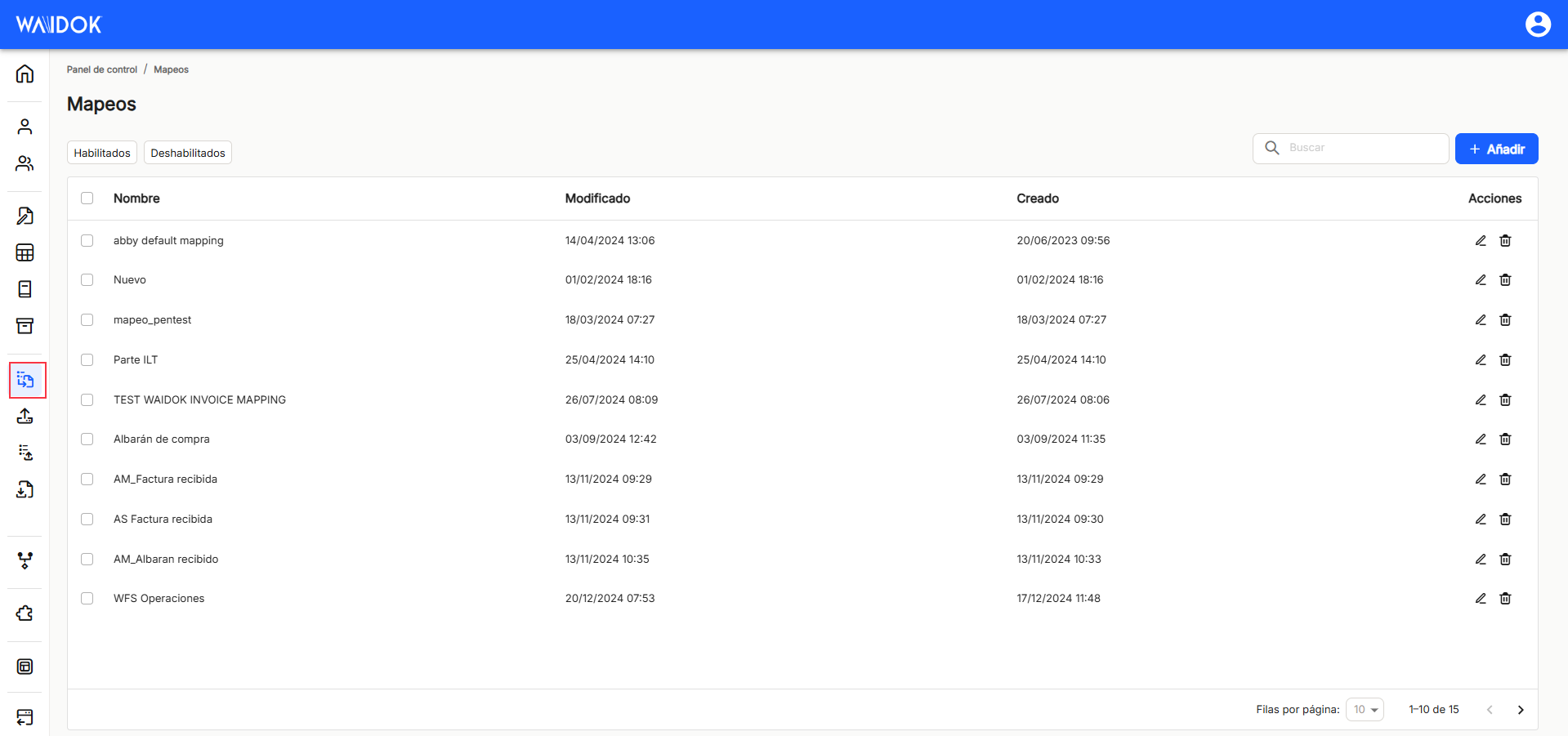
With"Add", the application displays a new subwindow to register a new mapping, where minimum mandatory fields to be filled in are required.
In the"Main data" section,"Name" must be entered as mandatory. Likewise, this collection must be enabled or not, so that it is active and available in the system, with the switch icon. The default setting is"Enabled".
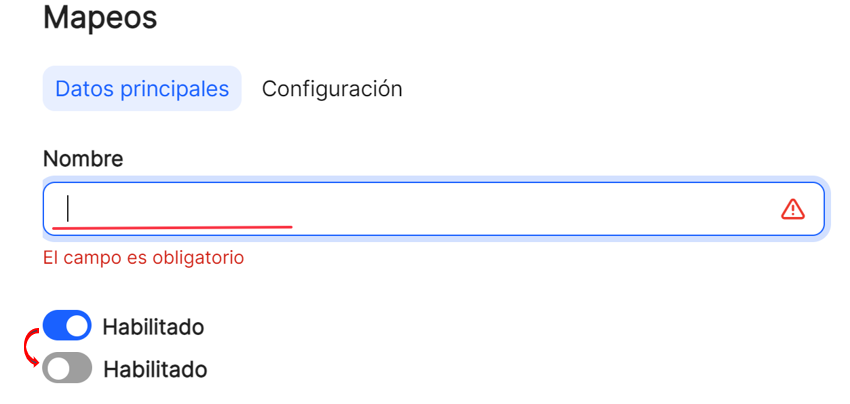
The "Configuration" tab , where the user can, using any of the"+add" icons, associate the properties generated in the system with any of the so-called"external fields", which have their origin and come from the configuration made in ABBYY.
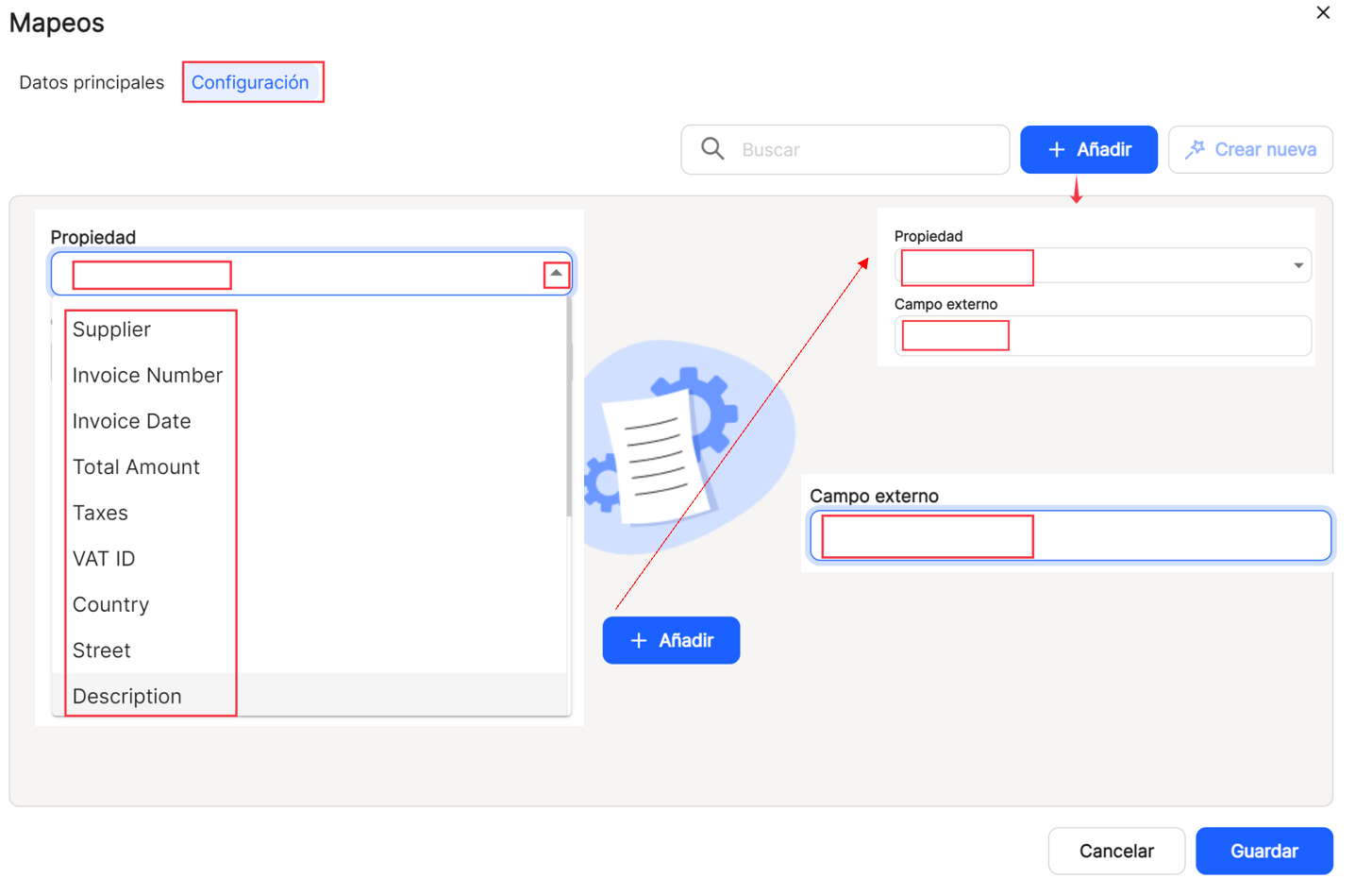
Using the"Search" option, we can locate and display in the table, those properties that contain in the"External field" or"Property" that character string.
Using the "Create new" icon you will be able to automatically generate a new association between an existing property in the application and the fields detected in ABBYY in the documents that have been configured and trained.

The mappings will be displayed in the list in the window table, with one of the two preset filters,"Enabled" or"Disabled". It will also affect the search, since it will only be performed on the mappings that meet the marked condition. By default it always shows the enabled mappings.

After completing the previous steps, the application displays the list of all the properties registered in the application.

With the direct option to the quick access of "edit" ![]() (displays the window with the mapping data of this line and its configuration), you access the window that allows the modification of the main data and configuration of this mapping as well as the tabs that could not be configured and that now appear active.
(displays the window with the mapping data of this line and its configuration), you access the window that allows the modification of the main data and configuration of this mapping as well as the tabs that could not be configured and that now appear active.

Using the"Search" option, we can locate and display in the table, those properties that contain in the"name" that string of characters.
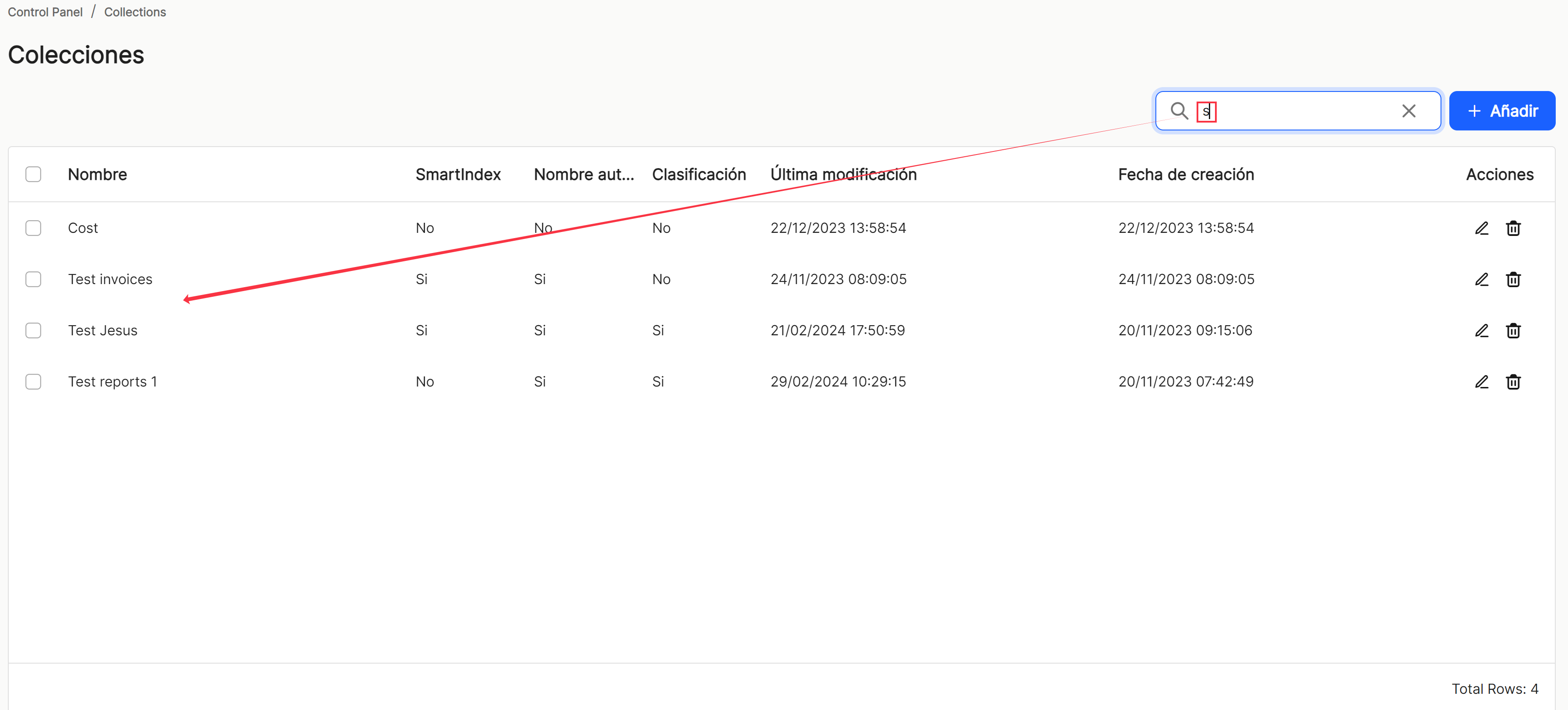
If an item (user) is selected, or several items , the application opens a submenu, which offers the " Delete " option, with which the selected property or properties are deleted.

As in the other sorting options of the application, when displaying a table with the list of properties of the mappings, regardless of whether they are displaying "enabled" mappings or "enabled" mappings, it is possible to display the properties of the mappings in a table with a list of properties of the mappings.disabled"will always display different columns, such as "Name", "Last modified" (date), "Creation Date" and "Shares"which contains the direct options to the shortcuts "edit" ![]() (displays the window with the property data of that line and its configuration) and "delete"
(displays the window with the property data of that line and its configuration) and "delete" ![]() .
.
The table listing the collection properties will allow you to view and sort the different properties shown and mentioned above. You can view the results in different ways using the various sorting and display options for any of the properties.
The user can sort in ascending or descending order :
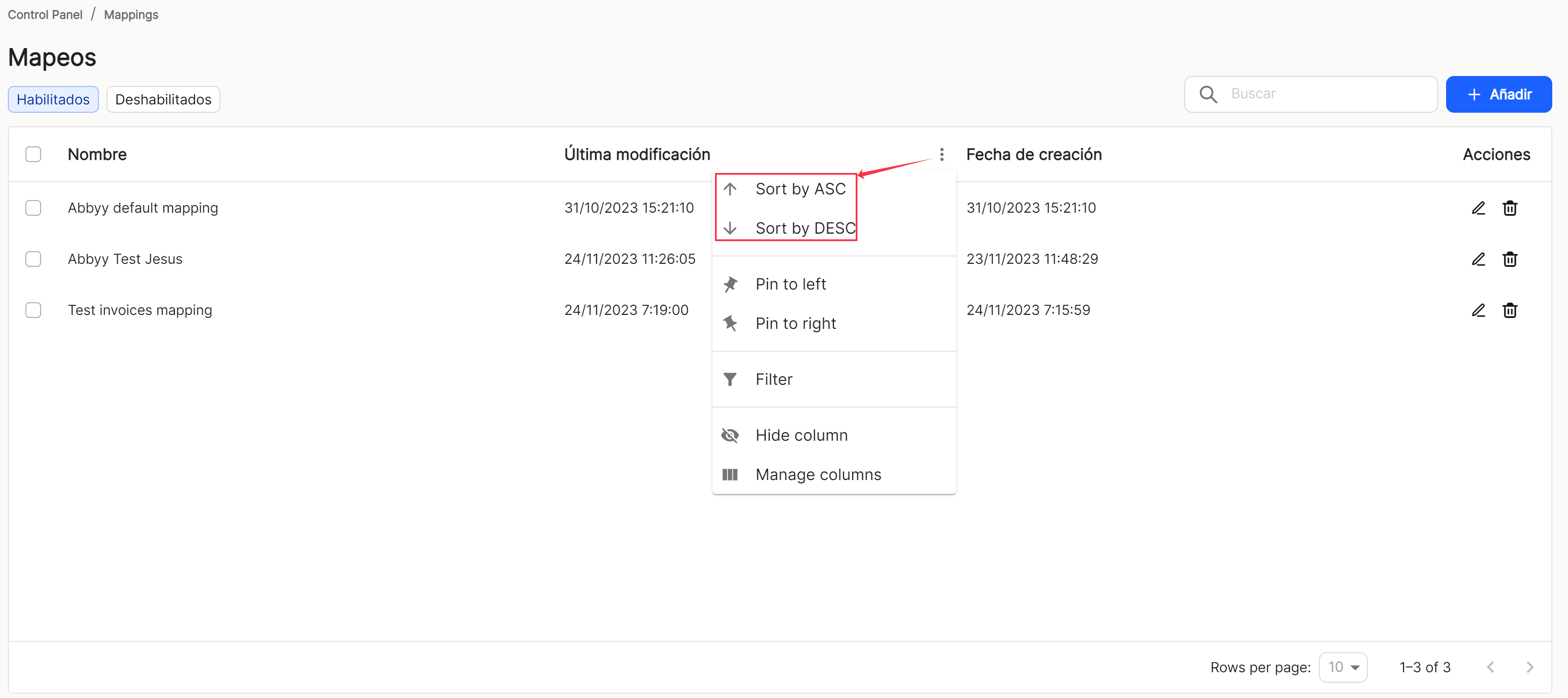
You can set as many as you need on the right or left,

use preconfigured filters or add others, based on the predefined columns in the application,

and hide or manage which columns will be displayed.

These settings do not remain saved and are only applicable as long as the user is in the window displaying the task list.
With the direct option to the quick access of "edit" ![]() (displays the window with the property data of that line and its configuration), you access the window that allows you to modify all the data and parameters of the collection.
(displays the window with the property data of that line and its configuration), you access the window that allows you to modify all the data and parameters of the collection.
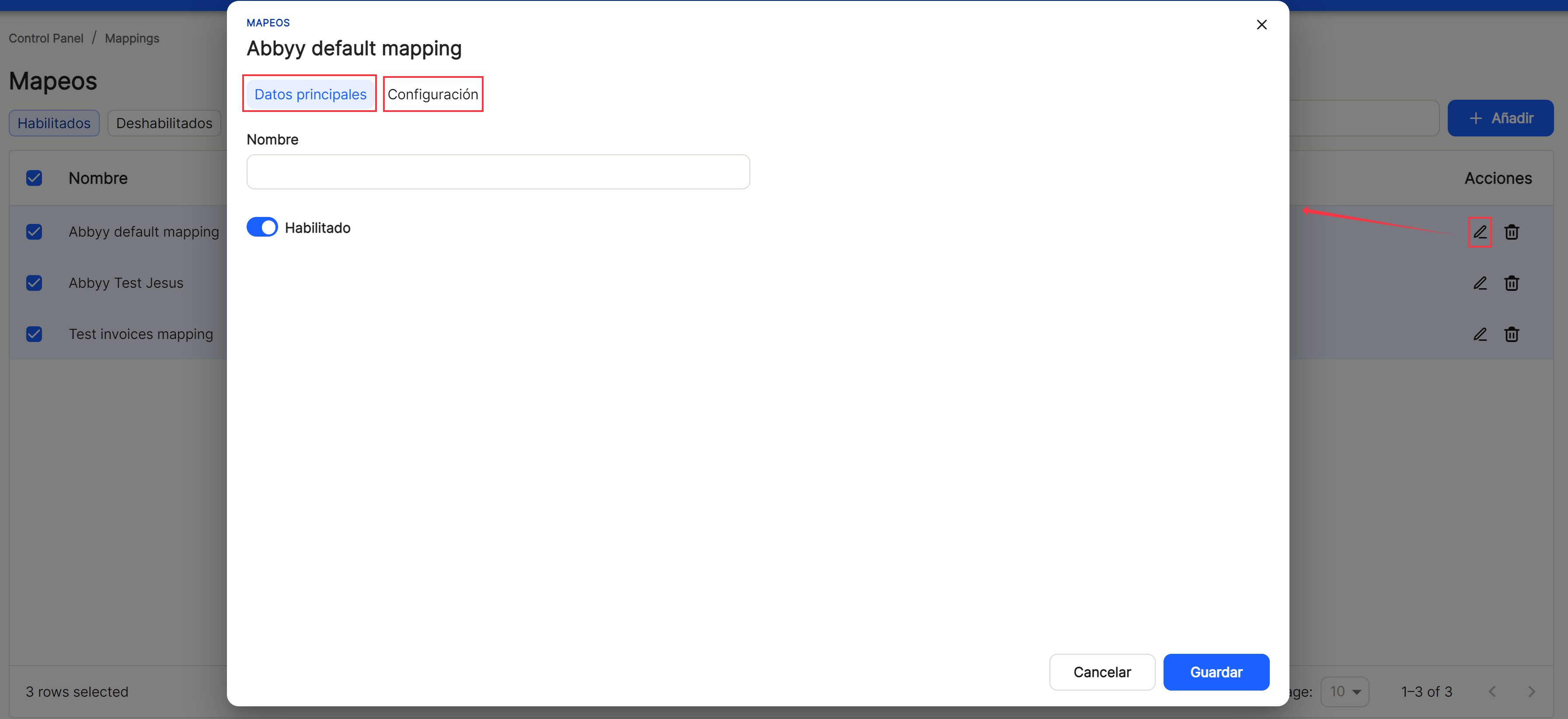
Direct access "delete" ![]() deletes the property from the application, displaying a message for confirmation or not before the action takes place.
deletes the property from the application, displaying a message for confirmation or not before the action takes place.

In the lower right part of the table, the total number of results obtained is shown, either without applying any type of search or filtering or applying any of the possible options. The system shows by default 10 lines per table and screen, allowing to show 15 lines or 20 lines per table and screen. It also allows forward or backward navigation in the displayed lists, depending on the pagination set.


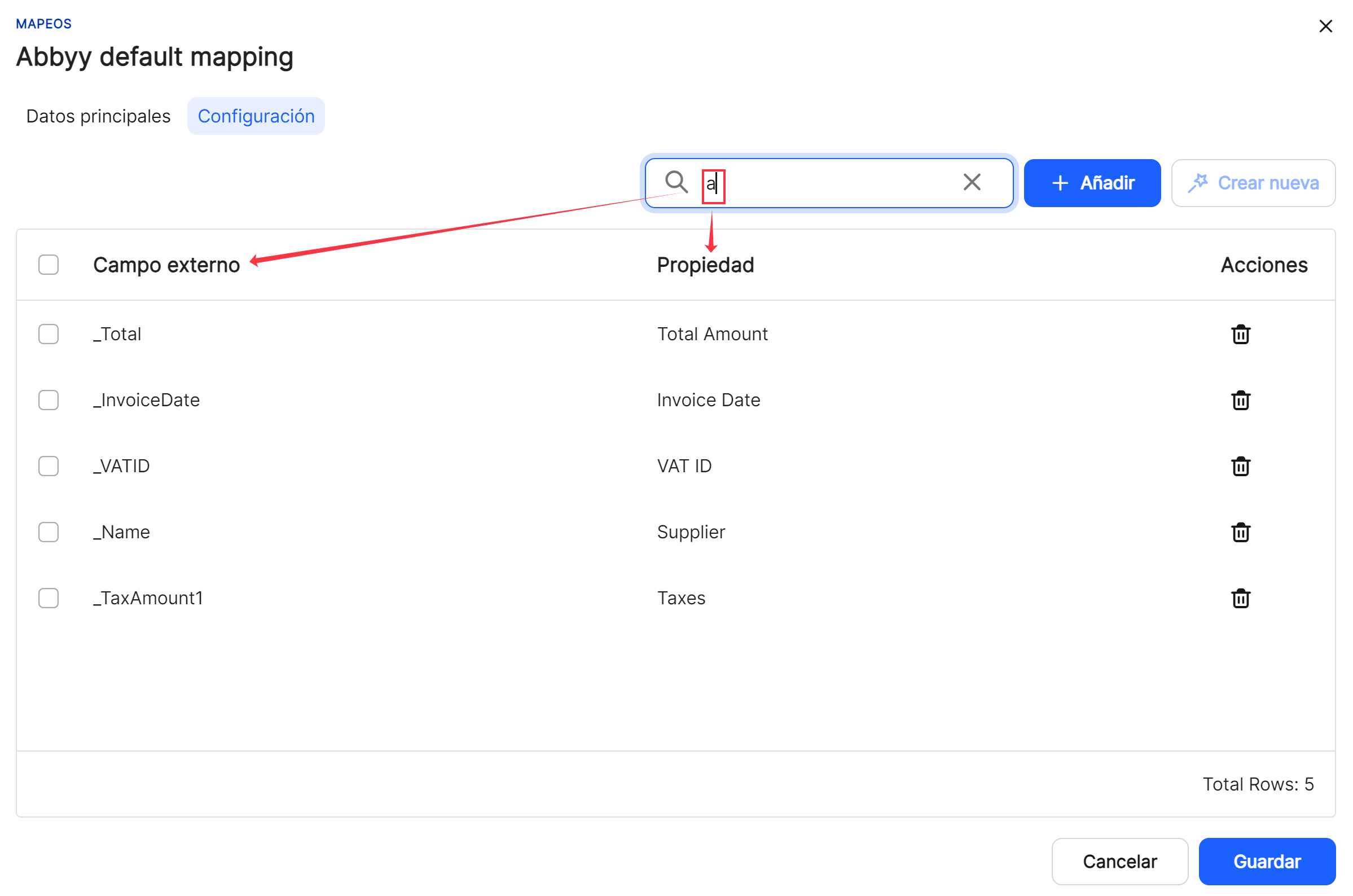

No comments to display
No comments to display